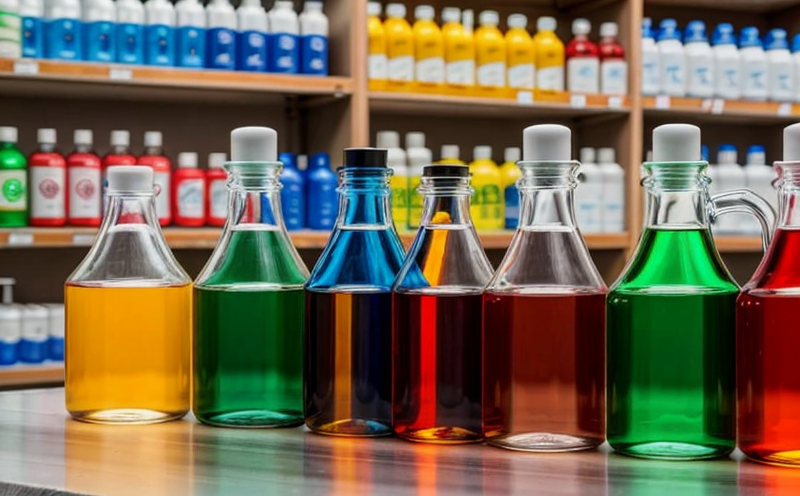OEKO TEX Allergen and sensitizer substance verification
The OEKO TEX Standard 100 is one of the most stringent global standards ensuring that textile products are free from harmful substances. The standard includes a comprehensive range of tests for allergens, sensitizers, and other hazardous chemicals to ensure product safety and consumer health. Our specialized service focuses on the verification of allergen and sensitizer substances in textiles, helping companies comply with this standard.
The process begins with an initial consultation where we assess your specific needs and requirements. Specimens are then prepared according to OEKO TEX guidelines, ensuring accuracy and reliability. We use advanced analytical instrumentation such as gas chromatography-mass spectrometry (GC-MS), high-performance liquid chromatography (HPLC), and Fourier-transform infrared spectroscopy (FTIR) to identify potential allergens and sensitizers.
Once the samples are analyzed, our team generates a detailed report that includes findings from both qualitative and quantitative analyses. This information is crucial for understanding which substances present in your textiles could cause allergic reactions or sensitization issues. Compliance with OEKO TEX requirements is essential for maintaining market access and brand reputation.
The service not only ensures regulatory compliance but also supports the development of safer, more sustainable products. By identifying potential allergens early on, you can make informed decisions about ingredient selection and formulation adjustments to create hypoallergenic materials.
We provide a range of additional services that complement our OEKO TEX allergen verification process. These include:
- Customized training sessions for your team
- Consultation on chemical-free alternatives
- Development of product-specific protocols
- Support with regulatory updates and changes
This holistic approach ensures that you have all the necessary tools to maintain compliance while continuously improving product safety.
| Sample Type | Tested Substances | Methodology |
|---|---|---|
| Fibers, yarns, fabrics | Allergens like benzoic acid esters, formaldehyde resins | Gel permeation chromatography (GPC), gas chromatography-mass spectrometry (GC-MS) |
| Finished products | Sensitizers including methanol, acetaldehyde | HPLC, FTIR spectroscopy |
This table outlines some of the sample types we test and the substances targeted in our analyses. The methodologies used are chosen based on their precision and ability to detect even trace amounts of these substances.
Our team works closely with clients throughout the verification process, ensuring that every step is executed accurately and efficiently. From specimen preparation to final report delivery, transparency and communication are key principles we adhere to.
Applied Standards
The OEKO TEX Standard 100 sets out strict criteria for the identification of allergens and sensitizers in textiles. The standard is based on internationally recognized guidelines such as ISO 14976, which deals with biological evaluation of medical devices, and ASTM D3881-15, which specifies methods for measuring formaldehyde content in textile materials.
Our team ensures that all tests conducted comply strictly with these standards. By doing so, we guarantee the highest level of accuracy and reliability in our findings. This adherence to international best practices is crucial not only for ensuring compliance but also for maintaining the integrity of your brand.
Industry Applications
The OEKO TEX Standard 100 has wide-ranging applications across various sectors, including fashion, home textiles, and personal care products. Here are some key areas where our service proves invaluable:
- Fashion brands seeking to introduce new hypoallergenic collections
- Home textile manufacturers looking to enhance product safety for children’s bedding
- Personal care companies aiming to remove irritants from their formulations
- Textile printers and dye houses ensuring the stability of colorants
In each case, our service helps clients ensure that their products meet stringent regulatory requirements. This not only protects consumers but also strengthens brand reputation and market competitiveness.
| Application Sector | Key Benefits |
|---|---|
| Fashion | Innovative designs without compromising on safety |
| Home Textiles | Enhanced trust among parents and guardians |
| Personal Care | Customer satisfaction through hypoallergenic formulations |
| Textile Printing & Dyeing | Consistent color quality with minimal impact on health |
The table above summarizes the benefits of our service in different sectors. By adhering to OEKO TEX standards, companies can achieve these advantages and more.
Competitive Advantage and Market Impact
In today’s competitive market, meeting stringent safety standards is not just a necessity but also an opportunity to differentiate yourself from competitors. By offering OEKO TEX allergen verification services, we help clients build trust with their customers, enhance brand image, and gain a competitive edge.
Customers increasingly demand transparency about the materials used in products they purchase. Compliance with OEKO TEX standards demonstrates your commitment to ethical business practices and consumer safety. This can significantly improve customer loyalty and drive sales growth.
In addition to direct benefits for consumers, meeting these standards also opens doors to new markets where stringent regulations are enforced. Many countries have adopted the OEKO TEX Standard 100 as a benchmark for textile product safety, making compliance essential for global market access.





